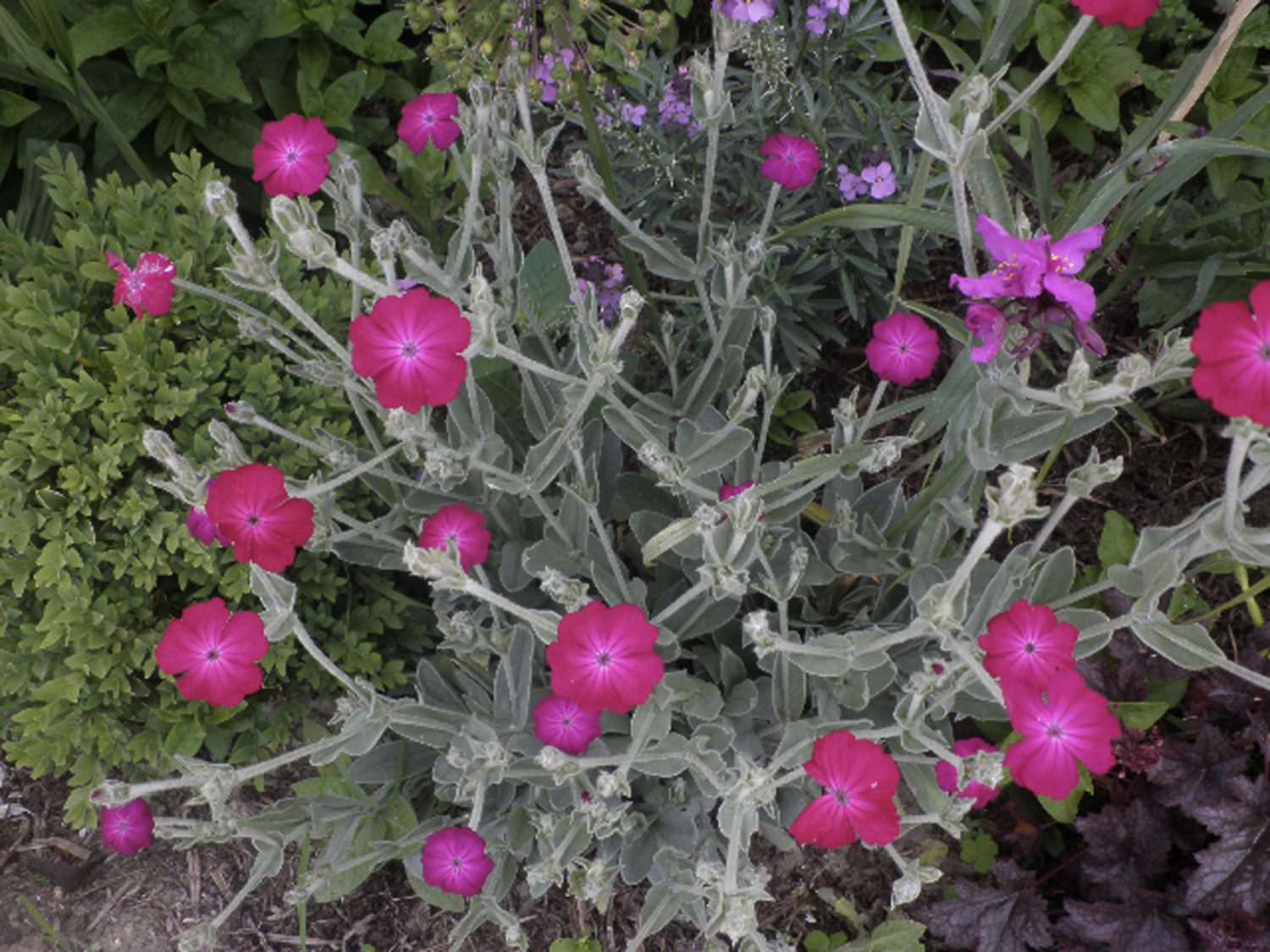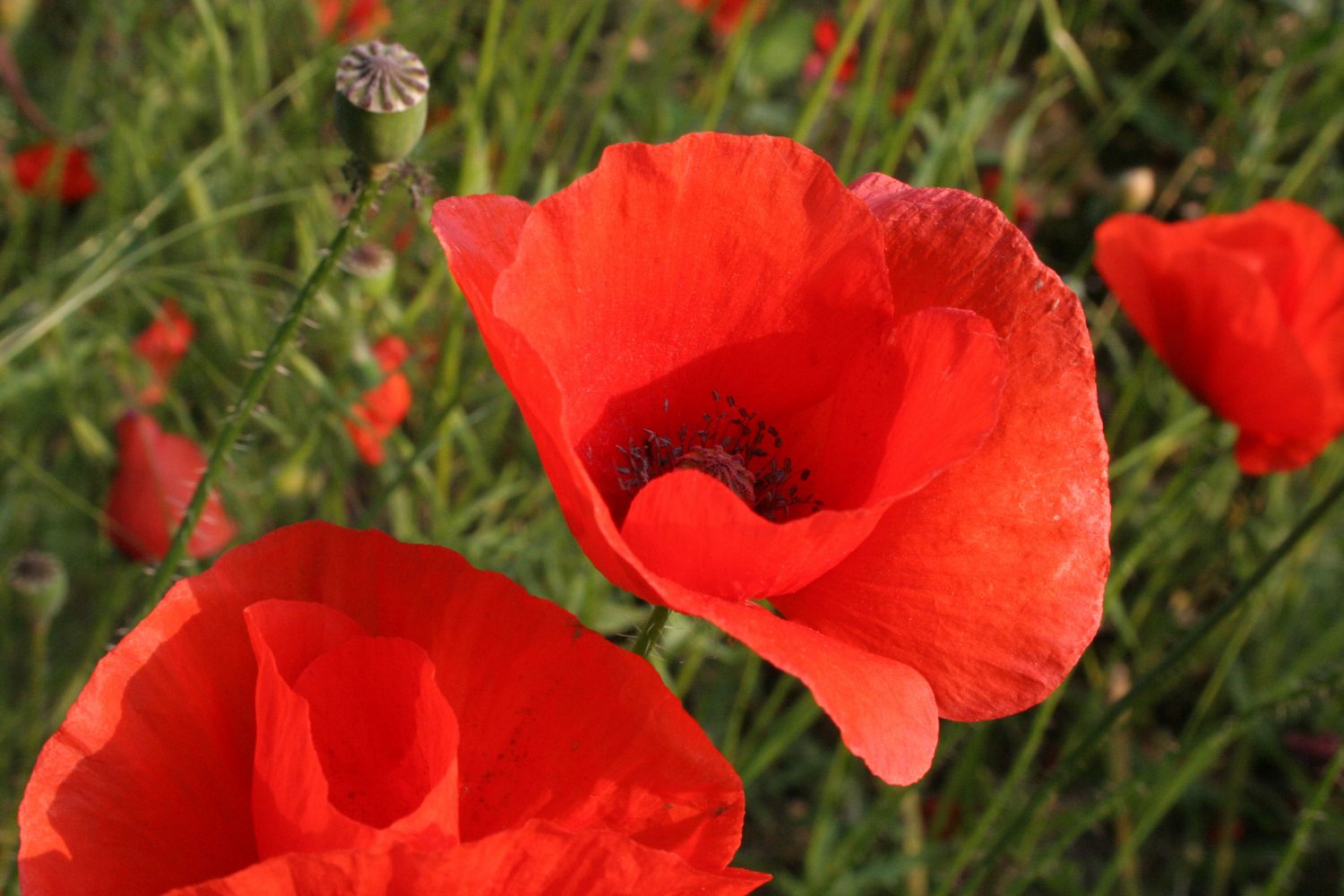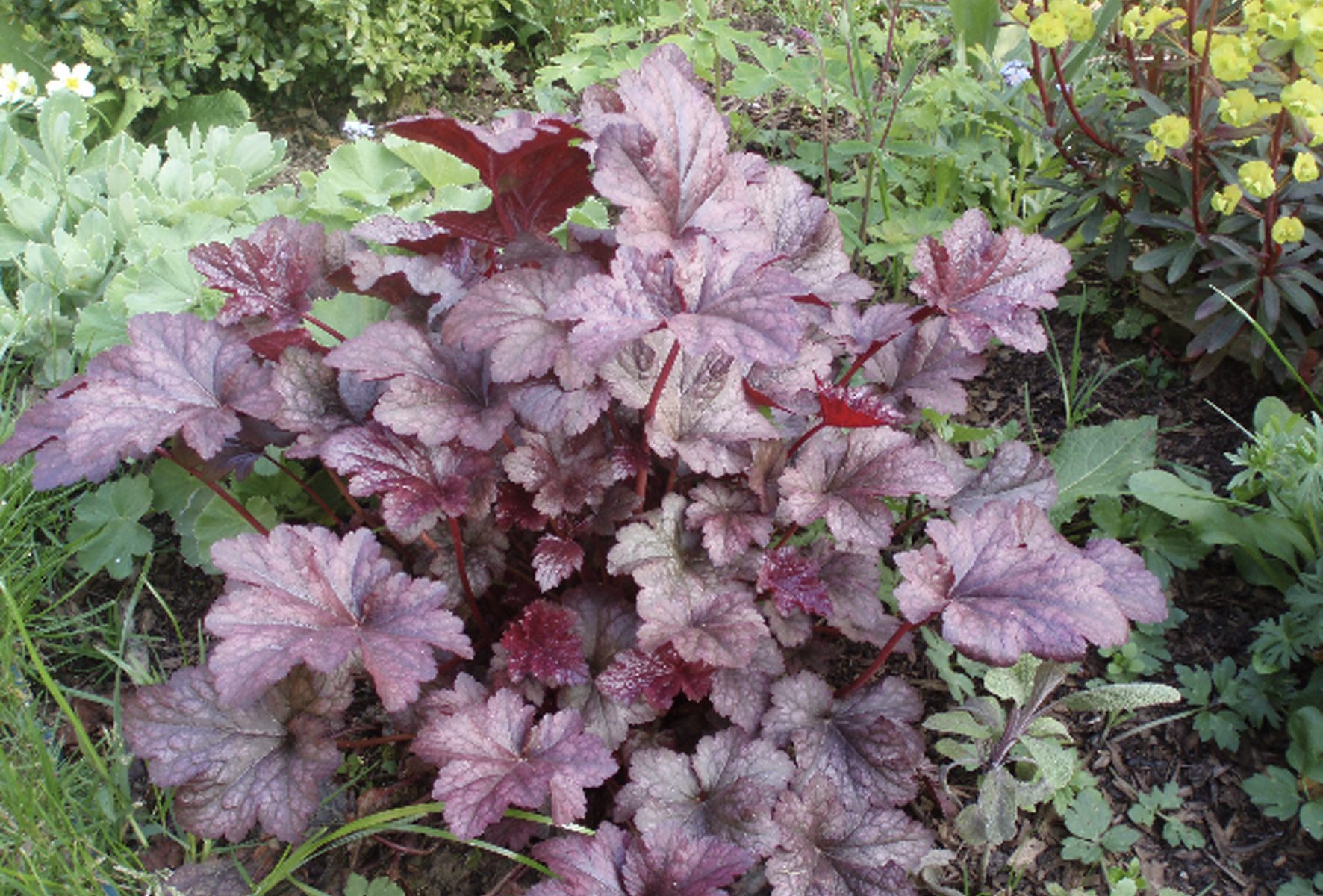I’m hoping that by the time you’ve read this, you’ll be able to tell, at a glance, where in the garden to position a new plant. Yes, without resorting to hypnotism, I promise that you’ll learn to spot the hints that plants give us about the conditions that will make them happy. Become familiar with a few simple rules and tell-tale signs and you may never again have to wander around the garden trying to work out where to plant your latest victim – sorry, purchase.
Reading the leaves
Leaves are the first thing to be affected when a plant is stressed or sick. Leaves have also evolved and adapted over millennia to suit the prevailing conditions in their environment. The colour, shape, size and even texture of a leaf will give away clues about where the plant would like to grow. Most of this has to do with availability of the things plants need in order to survive; nutrients, light and water.
• Leaf size – large leaves have a big surface area for absorbing as much light as possible, so most plants with big leaves have come from places where there’s less than optimum light. These will be happy in the shade, in fact many of them won’t be able to tolerate direct sunlight, because their leaves (unless they’ve evolved some protection) will scorch and wither. Large leaves also give a clue to the type of shade that the plant prefers – having that big surface area means that moisture will easily be lost, so a plant with large, soft leaves, a hosta for example, will grow best in damp shade. Small leaved plants will tolerate drier conditions, whether in shade or sun, because each leaf will have a smaller surface area and will lose less moisture.
• Leaf shape – a round, palmate (hand shaped), heart shaped leaf will lose more moisture than a narrow, pointed one. Some plants, like Rosemary and Lavender manage to survive in arid Cacti have gone further and turned theirs into protective spikes, leaving their swollen, water-holding stems to do the photosynthesising.
• Leaf colour – dark leaves absorb more light than pale, so the deep green leaves of a Holly, or a Camellia are ideally suited to shade. Pigment mutations that result in black, deep red or purple leaves will also do well in shade. Pale, silvery or grey leaves, on the other hand, reflect light well, so won’t be overwhelmed in harsh sunlight.
• Leaf texture – tough, leathery leaves, or a waxy coating will prevent water loss. Hairy or woolly leaves are also adaptations to arid conditions.
Combine several of these attributes together, say: felty, grey, needle-shaped and you can immediately see why a plant like Lavender will be less than happy in a damp, shady situation.
Flowers
It is less easy to spot the clues with flowers, but there are a few giveaways here too…
• Flowering season – quite often a flower that appears early in the season is doing it because it’s in a hurry. It could be trying to make the best of the thawing snow or brief spring rains – think of alpines and bulbs in the mountains, or racing to bloom under trees in a woodland setting, before the canopy of leaves closes in overhead and plunges it back into the gloom.
• Flower colour – bright colours are trying to attract insects and show up better out in the sunshine. Many are from open, sunny situations – meadows and plains. You can easily spot a few bright red poppies out in a field, but put a red flower in the shade and it all but disappears. Conversely, pale colours shine out in the shade and at dusk, some are adapted to flowering in early spring or winter when light levels are low.
What’s in a name?
Quite a lot, where plants are concerned. The common names of plants are often descriptive either of the plant’s habit or what it looks like – think of Bindweed or Sunflowers and sometimes the common name gives us a clue as to where it would like to grow – woodanemones, marsh marigold, but the Latin names of plants often go further (having two, sometimes three or more names).
Part of the name might tell us where the plant came from – chinensis or sinensis (Wisteria sinensis) in the name means it originated in China, japonica (as in Skimmia japonica) from Japan. The tongue-twisting Verbena bonariensis was first found near Buenos Aires (of course).
Among other things, Latin names can tell us about the conditions the plant likes to grow in, how big it will get, its habit and nature. You don’t need to know much Latin either, as there are some words that come up again and again (there are also websites and books devoted to the subject). If you did study Latin, be pleased that all those hours of rote learning weren’t entirely wasted. Here are just a few to get you started:
arvensis – of the field, rupestris – of hills, sylvestris - of woods, palustris – of marshes
Niches
Plants have evolved characteristics to suit the terrain they find themselves in (well, they can’t just walk away) and when you see them growing in their natural habitats it all begins to make more sense.
• Meadow plants – tend to be short lived, used to harsh conditions, low fertility and competition from other plants. They make as much seed as possible in their brief lives and then die. Most are annuals like poppies and cosmos, or short lived perennials like Verbena bonariensis.
• Alpines – like free-draining, gritty soil (scree), are small, early flowering and drought tolerant. Bulbs like tulips are from rocky mountainous situations, coming to life briefly in the spring and then hiding under the ground, their bulbs baking in free-draining soil. This is why tulips often rot if planted in wet, boggy ground. They don’t mind the cold at all, but won’t appreciate sitting in craggy clay for long.
• Woodlanders – woodland plants are used to growing in dappled shade under trees, or at the fringes. Many are early flowering and quite a few are biennial – growing leaves in the first year and flowering in the following spring: Foxgloves, Forget-me-nots, Honesty. There are bulbs and also climbers. Most climbers are from woodland situations, using the trees as supports as they scramble and claw their way up towards the light at the top of the canopy.
When you start to look at other things than flower colour and begin to see how plants have evolved to manage in so many different environments, it becomes much easier to picture them within your own garden. The British climate is a bit like baby bear’s porridge – neither too hot nor too cold (in theory), it’s not ideal for everything and some plants will struggle, especially through our wet winters, but on the whole, providing they’re frost hardy, most plants will flourish somewhere. It’s just up to us to find out where…
5 plants for dry shade
• Heleborus argutifolius – a tough evergreen with leathery, architectural leaves and pale limey-green flowers from February to April
• Buxus (box) – brought in by the Romans, but thought of now as a native, box puts up with shade and inhospitable soil.
• Mahonia ‘Charity’- another candidate with spiky leathery leaves with scented yellow flowers in the depths of winter.
• Euonymus fortunei ‘Emerald Gaiety’ – a tough little stalwart, this variety has pretty, variegated leaves
• Choisya ternata (Mexican orange) – glossy, dark green leaves and scented blossom in May
5 for damp shade
• Hosta ‘Sum and Substance’- great big lush looking leaves (hostas are slug-prone)
• Cornus ‘Midwinter Fire’ – amazing winter bark in fiery shades
• Rheum palmatum – ornamental rhubarb with giant leaves
• Astilbe – dainty frothy plumes of flower in summer
• Iris pseudacorus – an iris that likes to get its feet wet
5 for hot sun
• Sedum spectabile ‘Autumn Joy’ has succulent-type leaves, loved by butterflies and bees
• Phlomis russeliana – grey sage type leaves with whorls of pale yellow flowers
• Iris (bearded) – good strappy leaves, likes to bake in the sun
• Stachys – soft felty leaves like ‘lamb’s ears’
• Cistus (Rock Rose) – evergreen flowering in June/July
TEST
Rose campion will do well in a rock garden or cottage garden
TEST
Poppies are used to harsh conditions, low fertility and competition from other plants
- words: Jo Arnell
You may also like
In the Night Garden
Jo Arnell explains how to make the most of your outdoor space once darkness falls Some enchanted evening you may see me outside – mainly searching for slugs in the garden, because the cool hours of night are when they...
Contain your excitement
Jen Stuart-Smith discusses how to get creative with your pots and planters My love affair with plants started with houseplants when I was a child. As my bedroom windowsill overflowed – resulting, occasionally, in waking up with compost under my...
More than just a pretty face
Jen Stuart-Smith explores the multiple uses of some easy-to-grow garden favourites When you grow flowers for their beauty, shape and colour it can be easy to forget all the other qualities they have to offer. Some are edible, others provide...










